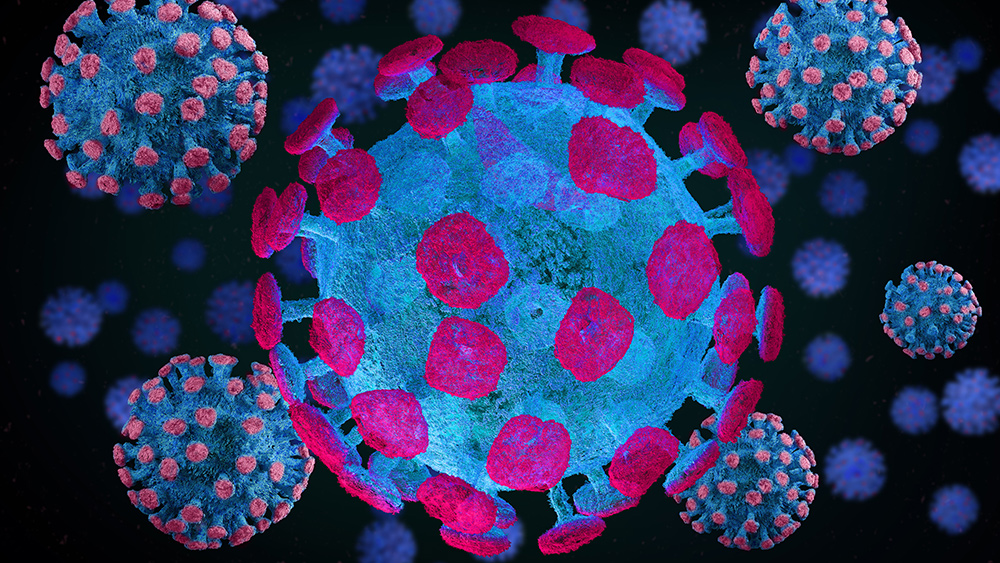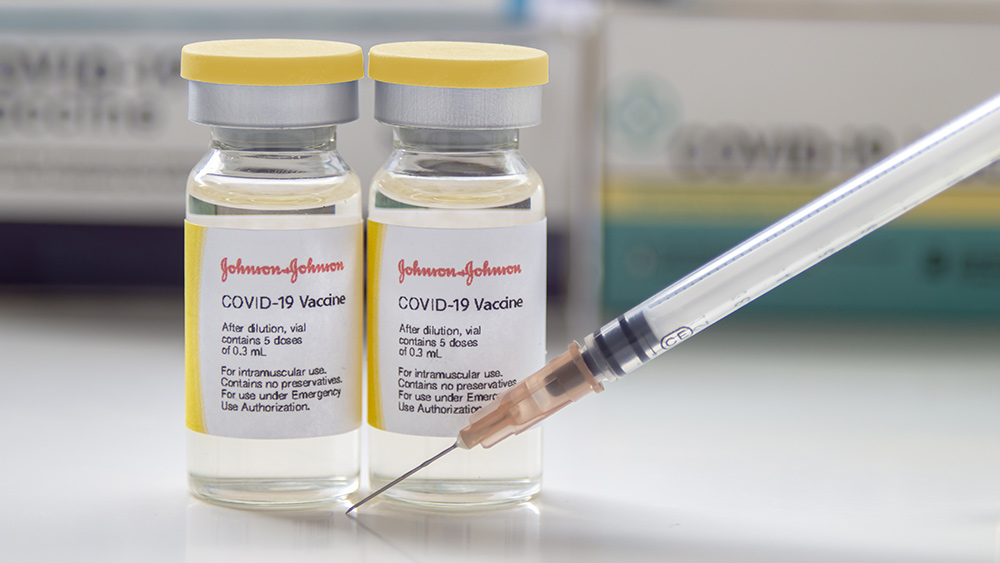UK variant is now the most dominant coronavirus strain circulating in the US, say observers
By nolanbarton // 2021-04-12
Tweet
Share
Copy

Centers for Disease Control and Prevention (CDC) Director Dr. Rochelle Walensky on Wednesday, April 7, said in a news briefing that the prevalence of "variants of concern" is increasing and that the U.K. variant, known as B.1.1.7, is now the most dominant Wuhan coronavirus (COVID-19) strain circulating in the United States.
"Based on our most recent estimates from CDC surveillance, the B.1.1.7 variant is now the most common lineage circulating in the United States," Walensky said.
The spread of the U.K. variant, which scientists have found to be more contagious, adds to growing concerns that the country may be on the cusp of another surge. Both case numbers and hospitalizations continue to rise despite an active vaccination drive that is inoculating an average of nearly 3 million people each day.
CDC director says uptick in infections apparently driven by young people
Walensky reported that some of the recent clusters of cases have been linked to daycare centers and youth sports, adding that the uptick in the number of new infections is apparently driven by young people. "Hospitals are seeing more and more younger adults – those in their 30s and 40s — admitted with severe disease," she said. The most recent seven-day average for hospital admissions in the U.S., at roughly 5,000 per day, has increased 2.7 percent over the previous week, Walensky said. Meanwhile, the reported 75,038 infections on Wednesday pushed the seven-day rolling average to 65,882. According to a Daily Mail analysis of Johns Hopkins University data, this marked the 13th straight day that the seven-day rolling average of new cases has topped 60,000. The country also recorded 2,570 COVID-19-related deaths on Wednesday, the highest figure seen since Feb. 24. Since the start of the pandemic, the country has recorded more than 31.7 million confirmed COVID-19 cases and more than 573,000 deaths. The CDC predicted in a report published in January that the U.K. variant could become dominant in the U.S. by March. At the time, only 76 cases of the B.1.1.7 variant had been identified in 10 states. It's not the first time a variant of the coronavirus has overtaken other strains during the pandemic. A mutation known as D614G, which was first identified in China in January 2020, spread rapidly through Europe and New York City before becoming the most common strain circulating around the world. White House COVID-19 adviser Andy Slavitt said Wednesday that the recent upticks in cases and hospitalizations underscore the importance of staying vigilant and getting vaccinated. According to the White House, 108 million people in the U.S. have received at least one shot, and vaccine eligibility is poised to open up to all adult Americans by April 19. Initial studies have suggested that the vaccines currently available offer strong protection against the B.1.1.7 variant. But if the virus continues to spread widely, other strains could emerge that are able to escape the protection induced by vaccines. (Related: Vaccine makers express confidence that their shots can take on new "mutant" strain of the same coronavirus their colleagues engineered in the first place.) That's why Slavitt urged Americans to get vaccinated when it's their turn and uphold mitigation efforts such as social distancing and wearing a mask. "Even as we vaccinate Americans in record numbers, we're still not even halfway there and the progress we've made can be reversed if we let our guard down," Slavitt said. "It's in our power to minimize death, disease and misery. If all of us do our part, we can help save lives in April, May and June."Fauci changes tone overnight about the country's COVID-19 situation
The big surge in number of new cases Wednesday apparently made Dr. Anthony Fauci change his tone overnight about the country's current COVID-19 situation. On Tuesday, April 6, the director of the National Institute of Allergy and Infectious Diseases (NIAID) said on "Morning Joe" that he believed the U.S. mass vaccination campaign would prevent a fourth surge of cases. But speaking to CNN's Anderson Cooper on Wednesday evening, April 7, Fauci said he is concerned that the number of daily cases has not notably decreased for some time. "Well, certainly, deaths are coming down, hospitalizations are coming down. But the number that is disturbing is the number of cases each day," said Fauci "It has plateaued at a disturbingly high level. When you're at that level, there is the risk of getting a surge back up." (Related: Fauci Virus: Shocking new evidence proves covid-19 began with Dr. Anthony Fauci and NIAID.) According to Johns Hopkins data, 22 states are reporting an increase in new cases. Michigan continues to lead the country in COVID-19 cases, recording 9,369 on Wednesday – the highest total in the U.S. and a 101 percent increase from two weeks ago. The Great Lake State also leads the nation in the number of inpatient hospital and ICU beds being used to treat coronavirus patients. Currently, 11.9 percent of inpatient beds are being used, which marks a more than 200 percent increase since late February. As of Wednesday, Michigan hospitals were treating 3,595 patients with confirmed or suspected cases of COVID-19. That's a significant jump from the 2,424 such patients one week earlier, and less than 1,000 patients a month ago. Illinois and Minnesota are also seeing spikes in the number of new cases. On Wednesday, Illinois recorded 2,815 new cases, which is a 19 percent increase from the 2,279 reported two weeks ago, while Minnesota reported 1,597 new infections, which is a 12 percent increase from two weeks ago. Cases are also rising in Pennsylvania, which reported more than 4,600 cases on Wednesday. According to an analysis by The Philadelphia Inquirer, infections have spiked nearly 75 percent since mid-March from a rolling average of 2,500 cases per day to 4,200 cases per day. Hospitalizations have also increased with 2,384 patients in hospitals with COVID-19 on Wednesday, according to data from the Department of Health. That's a 46 percent increase from the 1,631 patients reported two weeks ago. Follow Pandemic.news for more on the spread of COVID-19 in America. Sources include: NBCNews.com Coronavirus.JHU.edu DailyMail.co.uk MLive.comTweet
Share
Copy
Tagged Under:
pandemic outbreak superbug badhealth contagious coronavirus covid-19 Dr. Anthony Fauci coronavirus infections UK variant variants of concern coronavirus variant new infections
You Might Also Like
Vax deaths continue to mount up as Oregon woman dies from blood clot after getting J&J vaccine
By Ramon Tomey // Share
Recent News
Nvidia's $20 billion licensing deal for Groq targets Google's AI chip dominance
By isabelle // Share
The End of Slavery: A radical blueprint for true liberation
By kevinhughes // Share
U.S. cements status as global hydrocarbon superpower
By jacobthomas // Share
Ready-to-eat salads and snack packs RECALLED over Listeria risk
By oliviacook // Share
Winter survival: Essential strategies for a safe long-distance bug-out
By dominguez // Share











